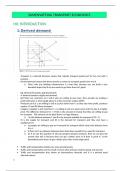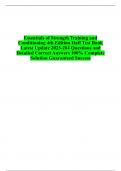Samenvatting
Samenvatting - Transport economics (1212TEWKOO)
- Instelling
- Universiteit Antwerpen (UA)
This is a summary of the course Transport Economics, taught by Joost Hintjens and Peter Shobayo in 3rd bachelor TEW. This summary was made in academic year and contains all slides. Guest lectures are not included in the summary.
[Meer zien]




